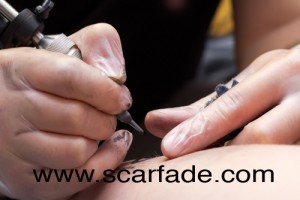 Sometimes people do things on a whim only to regret them later. A good example is getting a tattoo. You might commemorate someone special with a tattoo on your arm or back, only to decide a few years later that they are out of your life and you wish the tattoo was as well. On the other hand, you may be unhappy with the tattoo artist’s skill level and wish to have it removed due to embarrassment.
Sometimes people do things on a whim only to regret them later. A good example is getting a tattoo. You might commemorate someone special with a tattoo on your arm or back, only to decide a few years later that they are out of your life and you wish the tattoo was as well. On the other hand, you may be unhappy with the tattoo artist’s skill level and wish to have it removed due to embarrassment.
Laser
One of the most common ways to get rid of unwanted tattoos is via Laser Treatment. Effectiveness depends on the depth and color of the original tattoo. A study from a Dermatologist in Pennsylvania published through the National Institutes of Health shows that some tattoo colors are more difficult to remove than others. Black and red are easier to dissolve through laser treatments, while green, blue and yellow are more stubborn. The process is also less effective on the legs and feet than on other body parts.
Multiple Laser Removal treatments are often necessary. Some discoloration resembling bleached skin can result. It may also be difficult to remove the tattoo coloring entirely through the laser process. If the tattoo is very deep into the layers of skin, a prominent scar can develop. Staying hydrated before and after the procedure can help to enhance the healing process. Lidocaine injections, while helpful for pain, can increase the intensity of resulting scars. For best results, it is also advisable to wait six to eight weeks between laser treatments.
Surgery
Another popular method of tattoo removal is surgery. You can have a plastic surgeon do an excision of the colored skin, cauterizing the blood vessels or placing sutures to minimize bleeding. This will likely result in heavier scarring than laser treatments because the procedure is more invasive. The plastic surgeon may use a skin graft from another part of the body or a skin stretching technique for larger or more prominently placed tattoos.
Scar Removal
Whether it is done through laser treatments or surgery, once a tattoo is removed, the mission then becomes how to get rid of the scars caused by the process. The surface area may be quite large, depending on the size of the original tattoo. Scars can take on unusual shapes and patterns, creating noticeable imperfections in the former location. Staying hydrated and avoiding the sun helps the healing process. Using a silicone gel such as Scarfade to fade scars and prevent hyperpigmentation is effective in both cases. It is also useful in removing hypertrophic and keloid scars, which can develop after surgery.
